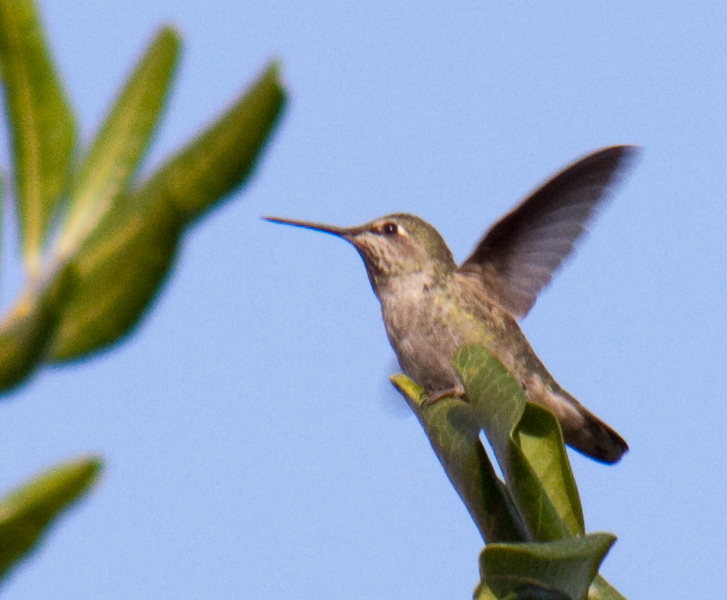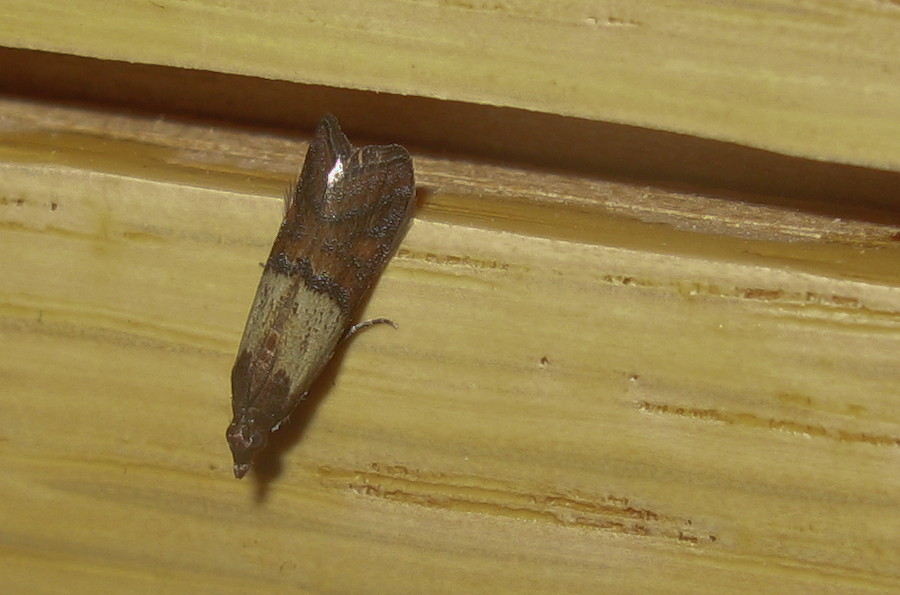March 10th, 2009
Allegedly my Tamron zoom lens has a 1:3 macro capability. That is, at maximum telephoto and minimum focusing distance (0.49 meters) objects should be imaged on the sensor at 1/3 their actual size. Let’s check that out.
The sensor in a Canon EOS 50D is 22.3mm by 14.9mm. A U.S. quarter has a a diameter of 24.26 mm. I extend the lens to 300mm and switch it to manual focus. Then I set the focus on the lens to 0.49m (the minimum). I move the camera until the quarter comes into focus and snap.

At 1:3 the quarter should occupy 24.26/3 mm == 8.087 mm. 8.087 mm/ 22.3mm = 0.36, just a tad more than a third the width of the picture. Actually it could be a little smaller than that if I didn’t shoot it head on. The raw image is 4752 pixels wide, so the quarter should be about 1710 pixels wide. Let’s open it up in Photoshop and find out.
Read the rest of this entry »
Posted in Photography | No Comments »
March 9th, 2009
The moths are starting to wake up from the brief Southern California winter (Actually, some never went to sleep, but they didn’t make good pictures.) so let’s see what’s on the memory card. First up we have a beautiful Unciella primula from the Tamarisk Grove Campground in the Anza-Borrego Desert State Park:

Unciella primula – Hodges#10111
This seems to be a little known and perhaps uncommon species. This was BugGuide’s first record, and the first live image for the Moth Photographers Group. I have not been able to find much information about it. Butterflies and moths of North America doesn’t list any records. It is in the California Moth Specimens Database under its previous name, Oncocnemis primula.
Posted in Bugs | No Comments »
March 8th, 2009

Great Blue Heron, Ardea herodias
San Joaquin Wildlife Sanctuary, 2009-03-08
Posted in Birding | No Comments »
February 27th, 2009

San Joaquin Wildlife Sanctuary, 2009-02-26
My photography is definitely improving. Just compare to this shot from a little over a year ago. Of course that was a cloudy winter day in Brooklyn, and this was a bright sunny day in southern California, but still the difference is remarkable. I still have a long way to go before Arthur Morris has anything to worry about.
One thing I still have to figure out is proper gamma adjustment. This picture looks great on my Mac but is much too dark on my Ubuntu/Gnome desktop. Haven’t checked Windows yet. Is it possible to make a photo like this actually work across all platforms? I know the Mac gamma is about 1.8 and the PC gamma is about 2.2. Not sure about Linux.
Posted in Birding | No Comments »
February 20th, 2009

Anna’s Hummingbird, Calypte anna
Irvine, CA, 2009-02-20
Posted in Birding | No Comments »
February 16th, 2009
Spring comes early in Southern California. Still this lepidopteran is a year-round visitor. I found it in the cabinet where I keep my bird seed, pet food, and other dry goods. Fortunately it seems to be a singleton since the caterpillars of this species can do real damage to such products (hence the name).

Indian Meal Moth, Hodges#6019 Plodia interpunctella
Irvine, California, 2009-02-09
Thanks to Charley Eiseman for the ID.
Read the rest of this entry »
Posted in Bugs | 3 Comments »






